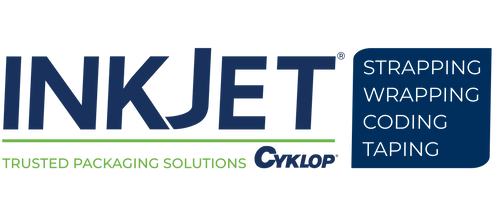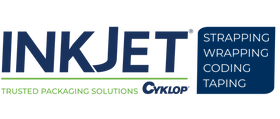Top Automatic Date Coding Machine Options
Modern product packaging is covered in different codes, markings, text messages, and images. Many of these messages and images are intended to intrigue shoppers and inform consumers about how to use the product. Colorful graphics and branded language, for example, are commonly used to make products stand out from the competition and catch the eyes of customers walking down the aisle.
Other product codes are applied to packaging to aid internal processes. For instance, lot codes, serial numbers, batch codes, and date codes are used across numerous industries to trace products throughout the supply chain. With full traceability, manufacturers, packaging companies, and distributors can all more effectively:
- Perform quality control
- Recall problem products
- Maintain inventory
- Source raw materials and ingredients
- Locate goods across the supply chain
Date codes uniquely aid two fronts; they inform consumers about product freshness and enhance various traceability efforts, including inventory management and quality control. For these reasons, date codes appear on a wide variety of products, including:
In certain cases, federal and state regulations may also compel manufacturers to place date codes on their products, as is the case with over-the-counter and prescription drugs.
To ensure that codes are sharp, long-lasting, and properly applied to each product, today’s companies outfit their production lines with automatic date coding machines. Date coding machines are available in a variety of forms to meet the needs of different operations. Below, we take a look at the most popular date coding options on the market and explore their strengths and weaknesses.
The Best Automatic Date Coding Machines by Type
The most commonly used automatic date coding machines include continuous inkjet (CIJ) and thermal inkjet (TIJ) printers, laser coding systems, and high-resolution (hi-res) case coders. Learn more about each type below.
Continuous Inkjet Printer
Continuous inkjet printers have been used to complete date coding applications since the 1950s. In the decades since, CIJ technology has become faster, more reliable, and more versatile but still uses the same operating principles to deliver excellent results.
CIJ printers are built to complete uninterrupted, high-speed marking applications for up to 24 hours per day. A production line printing technology, CIJ systems internally circulate ink continuously to minimize operating pauses and maximize marking speed. CIJ printers generate this uninterrupted ink cycle with a series of pumps, gutters, valves, and electrode plates.
With the aid of these parts, CIJ printers create highly-pressurized ink streams that can:
- Mark passing materials at speeds above 300 m/min.
- Create alphanumeric messages, traceable markings, and machine-scannable codes
- Effectively mark both curved and flat surfaces
- Code materials from a top-down, bottom-up, or horizontal orientation
These capabilities enable CIJ printers to work well in diverse line setups and complete numerous applications. Moreover, CIJ systems are compatible with a wide range of fluids, including specialty inks and aftermarket formulas, and can mark glass bottles, cardboard boxes, paperboard cartons, aluminum cans, and everything in between.
At the same time, CIJ printers do have a few drawbacks. They have relatively limited resolution possibilities, smaller code size capabilities, and require professional maintenance at least once per year. However, even with these drawbacks, CIJ printers like the DuraCode Touchscreen and DuraCode Pigment are still well-suited for the vast majority of industrial date coding applications.
|
|
|
|
|
|
Thermal Inkjet Printer
Thermal inkjet printers are lightweight, compact machines that have minimal maintenance requirements and diverse coding capabilities. While CIJ printers are relatively large and heavy (around 100 pounds when filled with ink), TIJ printers often weigh less than 10 pounds and can fit in your hand. Thanks to their small size, TIJ printers are easy to install, move, and adjust along production lines and are available in handheld models.
Although TIJ printers are small, they deliver excellent results. TIJ models like the Anser X1 can create codes at resolutions up to 600 x 600 DPI with a max print height of 1”. Historically, TIJ printers have offered slower coding speeds than CIJ printers, with most TIJ units maxing out around 100-120 m/min. However, newer models like the Anser X1 can mark materials at 300 m/min—a rate that rivals many CIJ systems.
From a cost perspective, TIJ printers are generally less expensive than CIJ printers. They also have lower maintenance costs, as TIJ printers have few or no ongoing maintenance needs. However, TIJ ink cartridges are more expensive than CIJ cartridges and are available with fewer formulas. This often makes them compatible with fewer substrates as well.
While some TIJ printers like the X1 can mark both porous and non-porous materials, many TIJ units are only compatible with one or the other. Accordingly, you should always speak with an expert about your coding needs before investing in a specific TIJ system.
|
|
|
|
|
|
Laser Coding Systems
Along with CIJ printers, laser coding systems are the best industrial-speed solutions on the market today.
For decades, large-scale packaging and manufacturing operations have used laser systems to place date codes and other essential markings onto their products. The high speed and accuracy of laser units make them an excellent choice for demanding date code applications, such as:
- Beverage bottling
- Food canning
- Drug packaging
- Chemical packaging
Like CIJ printers, laser coding systems are compatible with both curved and flat surfaces, making them well-suited for diverse packaging forms and products. Laser markings are known for their durable properties, sharp appearance, machine-scannable contrast levels, and substantial height possibilities.
As far as cost is concerned, laser systems are significantly more expensive upfront than CIJ printers. Beam shields and fume extractors must also be installed on the line to ensure worker safety. However, laser units have fewer maintenance costs than inkjet printers and use zero consumables aside from filters, both of which considerably reduce ongoing expenses.
The most popular laser coding technologies on the market are:
- Fiber laser units
- CO2 laser units
- UV laser units
These machines create beams at different wavelengths, which impacts material compatibility. The chart below shows which technologies are generally compatible with certain materials:
|
|
|
|
|
|
|
|
|
|
|
|
|
|
|
|
|
|
|
|
|
|
|
|
|
|
|
|
|
|
|
|
|
|
|
|
|
|
|
|
|
|
|
|
|
|
|
|
|
|
|
|
|
|
|
|
|
|
|
|
|
|
|
|
|
|
|
|
|
|
|
|
|
|
|
|
|
|
|
|
|
|
|
|
|
|
|
|
|
|
|
|
|
|
|
|
|
|
|
|
|
|
|
|
||||
To meet the needs of different operations, InkJet, Inc. carries numerous laser systems, including:
- The F8100C CO2 Laser Marking Machine
- The F8100F Fiber Laser Marking Machine
- The F8100U UV Laser Marking Machine
- The LDR 7100 Laser Marking System (a CO2 machine that specializes in beverage marking)
|
|
|
|
|
|
High-Resolution Case Coders
High-resolution case coders excel at printing on porous materials such as cardboard and paperboard. Equipped with large, powerful printheads, hi-res units pressurize thick, oil-based inks to create stark text codes and images.
Due to their porous material compatibility and substantial print size, hi-res systems are most commonly used for secondary packaging applications. In a date coding context, operators use hi-res systems like the Precision Series 72mm to place large, durable date codes on shipping cartons, cases, and trays. These codes aid traceability and help facilities across the supply chain maintain accurate inventory.
Hi-res units are not built for high-speed coding. Most hi-res systems max out at 60 m/min. However, this speed is often sufficient for secondary packaging workflows.
|
|
|
|
|
|
InkJet, Inc. Can Help You Find the Best Automatic Date Coding Solution
Date coding is an essential part of countless product packaging and manufacturing workflows. At InkJet, Inc., we supply companies of all sizes and industries with high-quality marking solutions. From industrial-speed CIJs and laser systems to high-definition TIJ and hi-res models, InkJet, Inc. carries everything you need to achieve date coding success. Call us today to learn which option is right for you.
For more information about automatic date coding machines, contact InkJet, Inc. online or call 1(800) 280-3245.



